Gourmet Promotional Casserole (U.S.) 1961-1962
Gourmet Black & White Casserole (U.S.) 1961-1962
| A second version of the Gourmet casserole in opal with a black design is fairly easy to find, but its exact date of production and distribution method were unknown until a recent eBay seller, deepseatmac, found one new in box. The Black and White Gourmet (Cat. #G-54J, #475-CW-P.M.) included a product pamphlet for Golden Honeysuckle items and the same four-legged trivet with candle-warmer as offered on the Zodiac promotional item in 1961-1962. This information accurately dates the Black and White Gourmet casserole to the same time period as the Bluebelle/Delphite Blue version. |
Gourmet Yellow & Gold Casserole (Canada) 1968
Based on recent discussions with a collector, it turns out this casserole was, in fact, available exclusively in Canada since the box was marked Corning Glass Works of Canada, LTD, Toronto, Ontario. Most surprisingly, however, were two new pieces of information that came to light.
The first surprise was that the Canadian Gourmet came with an oblong walnut serving tray rather than a cradle with candle warmer. The official name was "80 oz. Gourmet Round Casserole with Walnut Serving Tray."
The second surprise was that the Canadian Gourmet casserole was offered as a promotional item many years after the U.S. versions. The box reveals the item number for the Canadian Gourmet was 6268. Assuming the same numbering conventions were used as in the U.S., the last two digits provide the year of release as 1968.
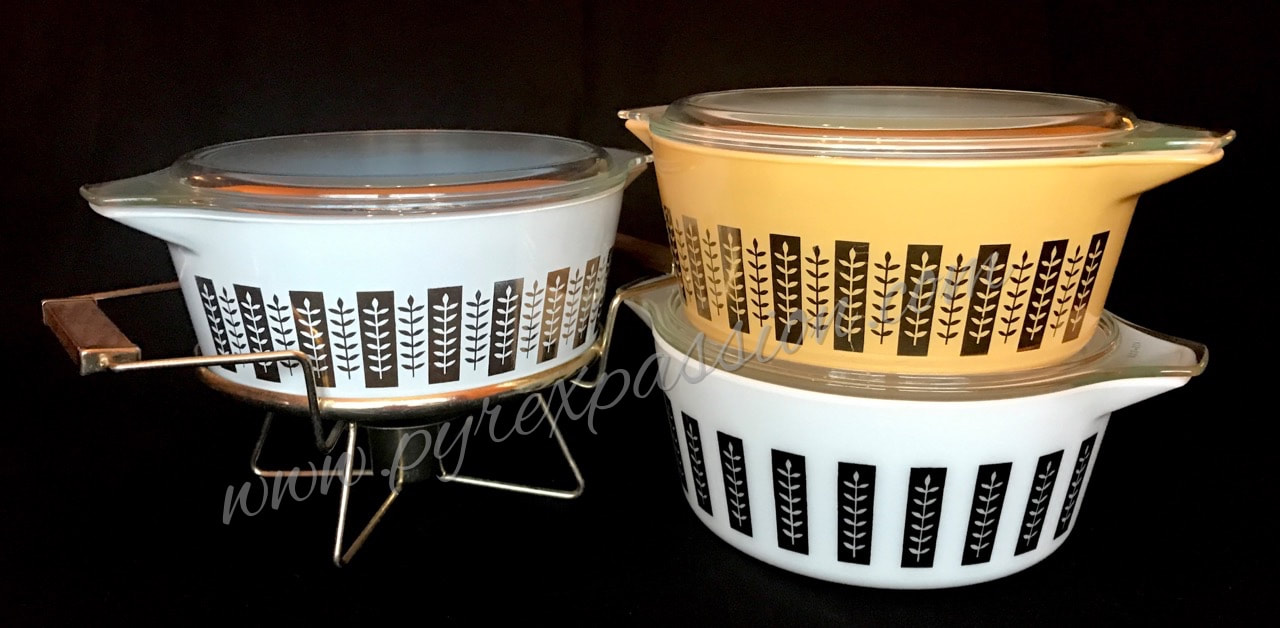
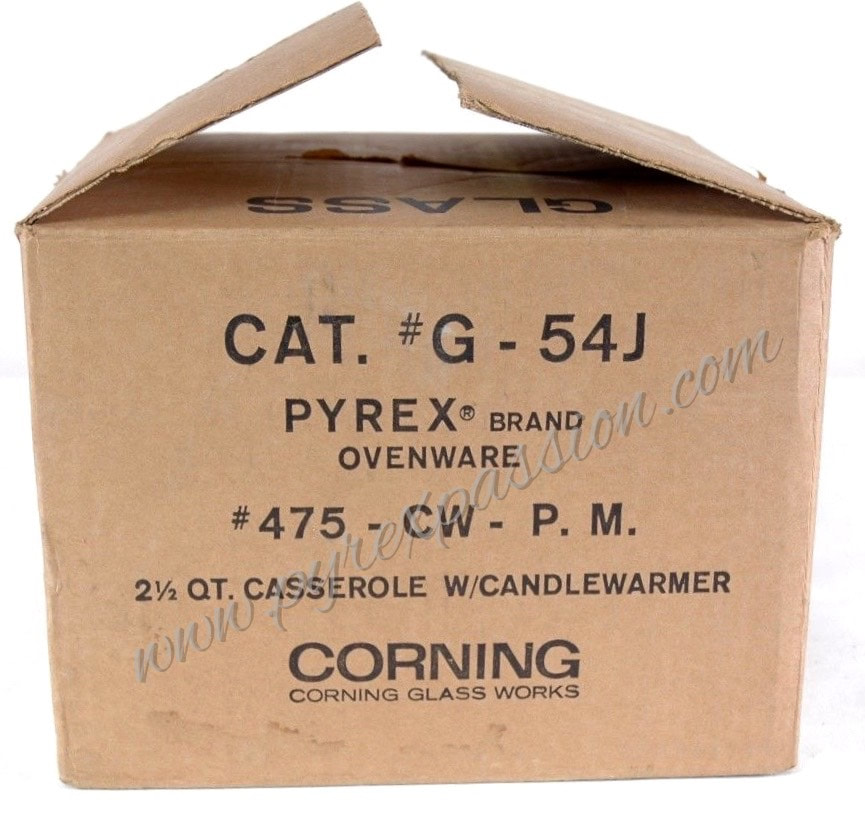
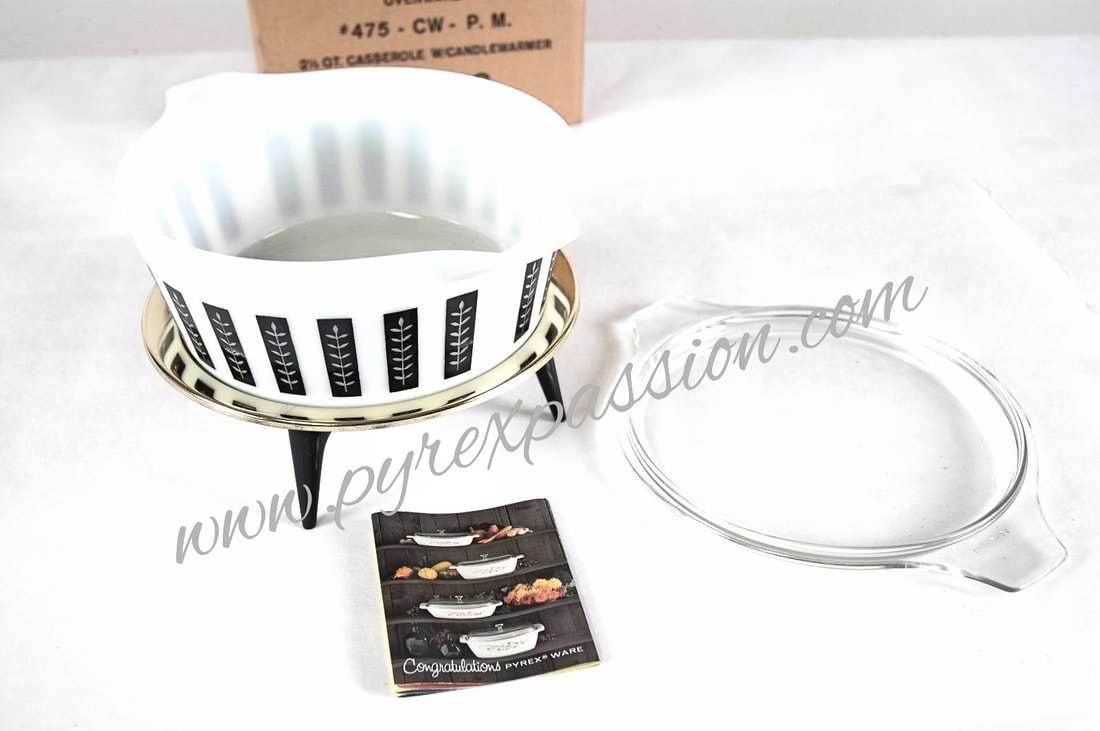
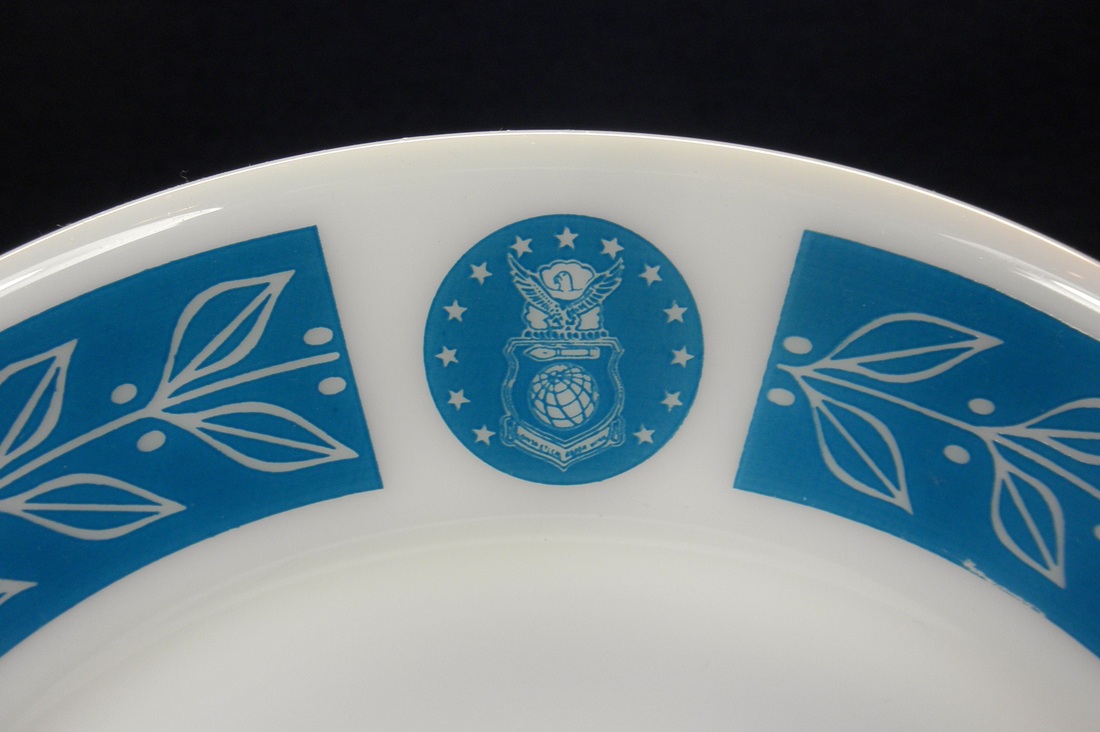
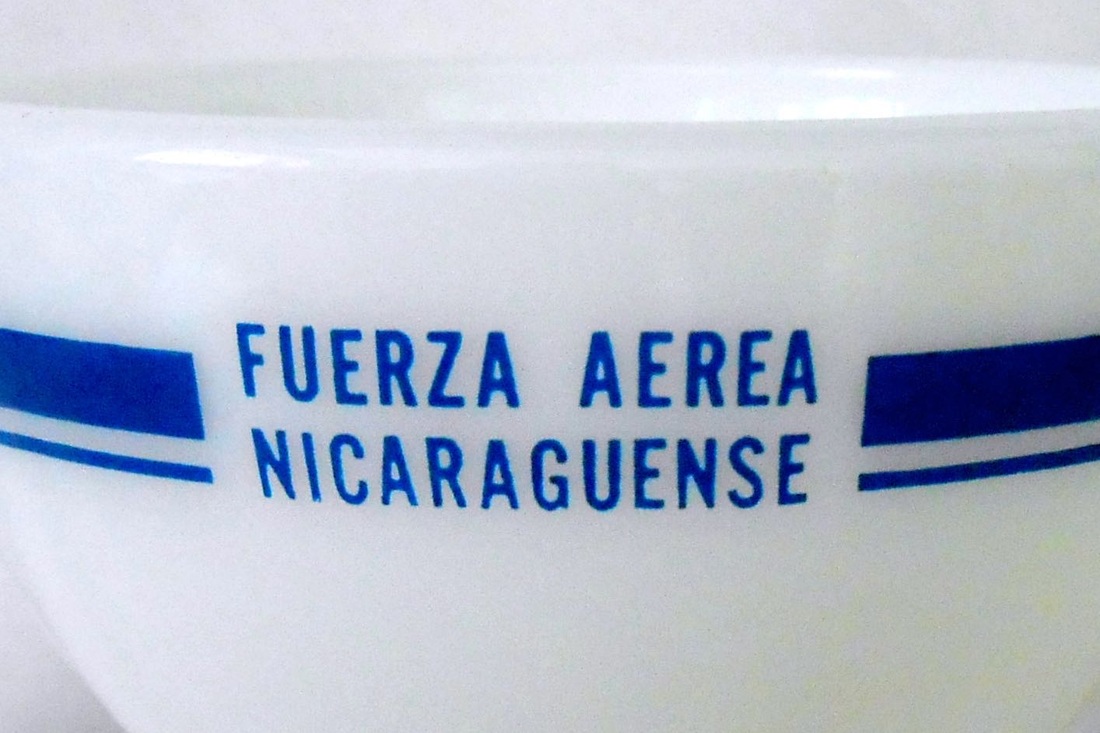
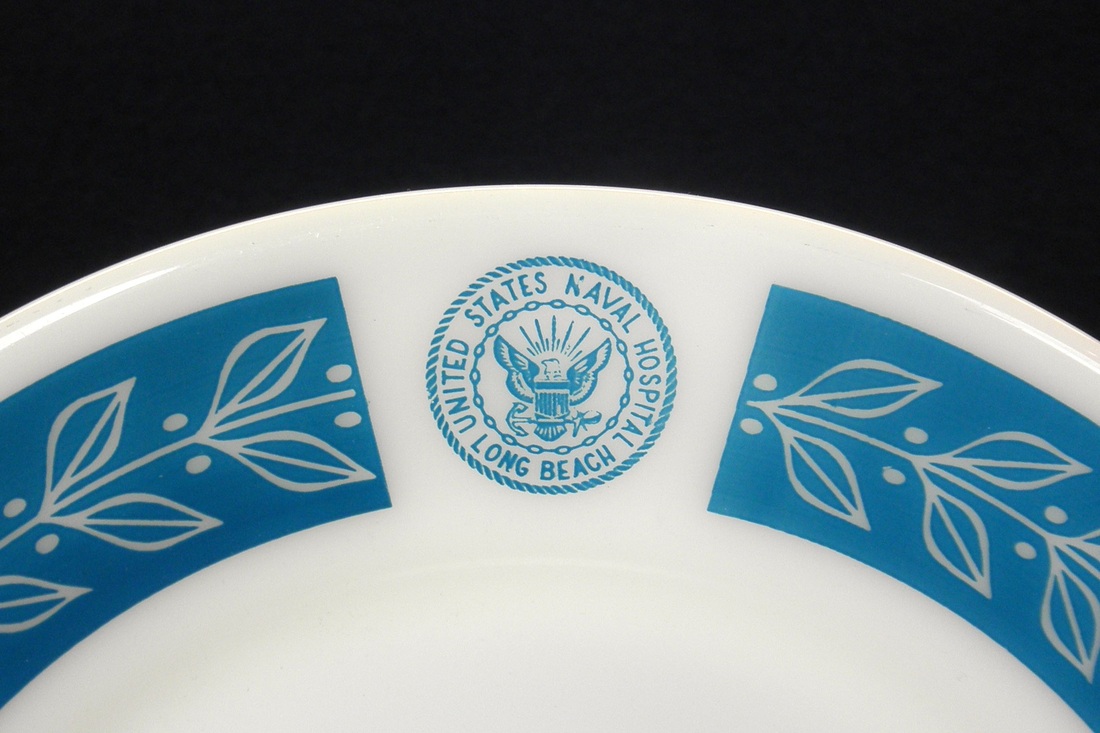


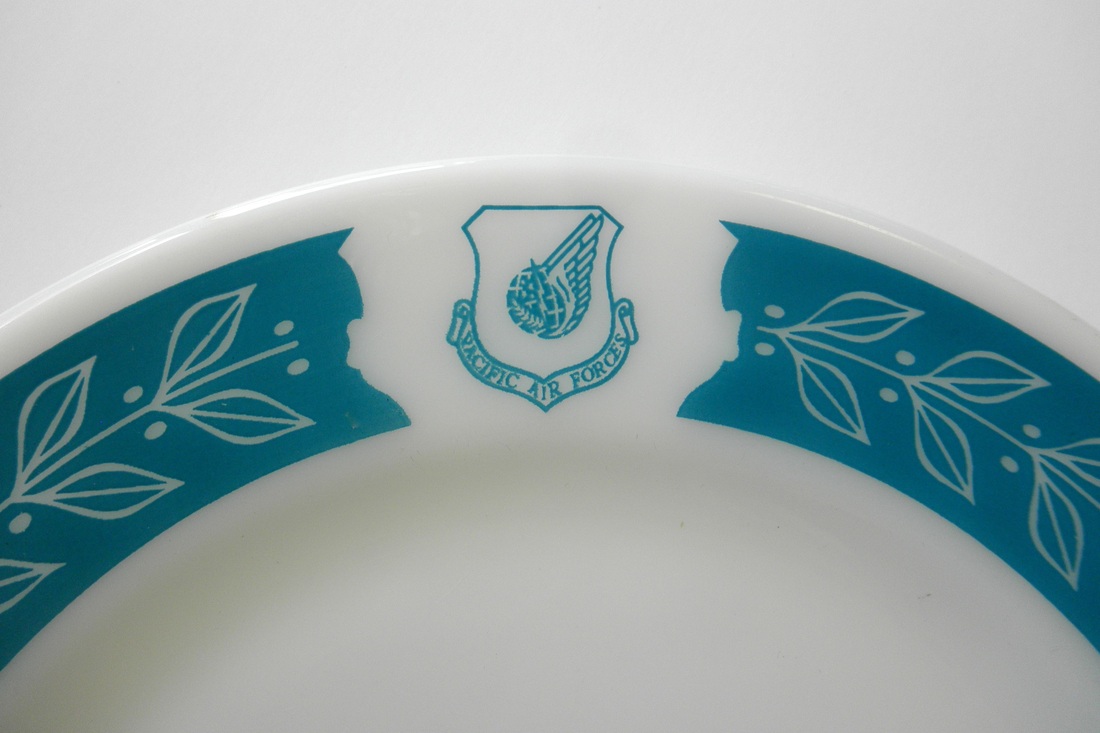
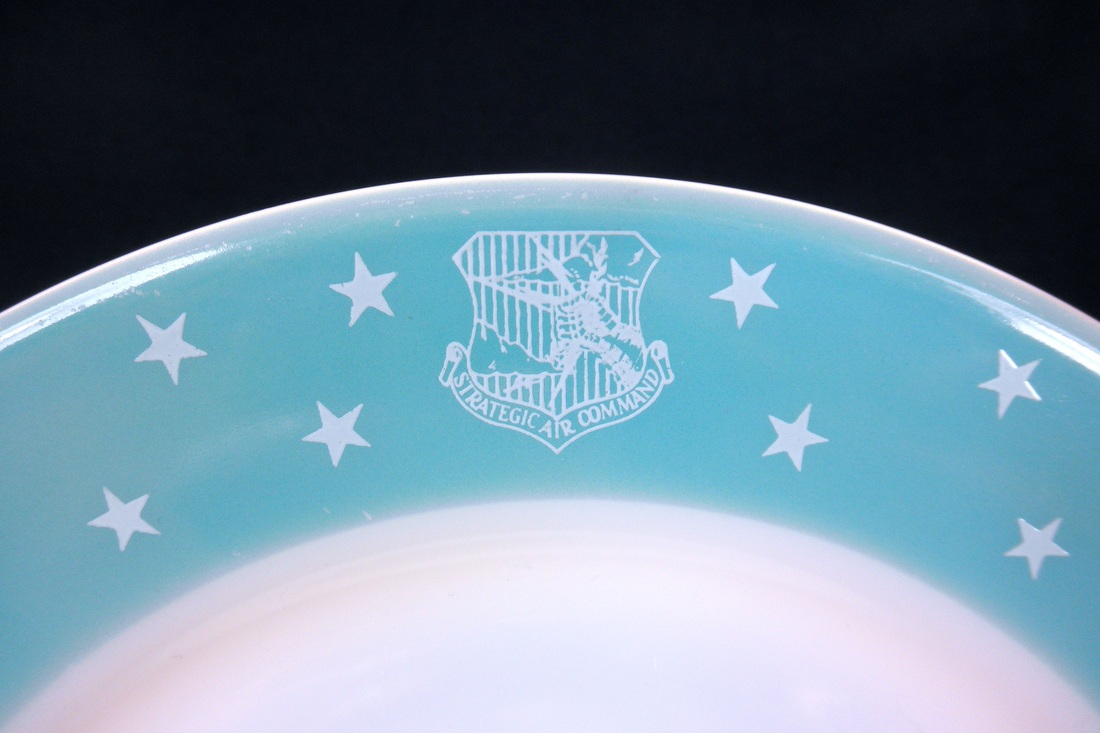
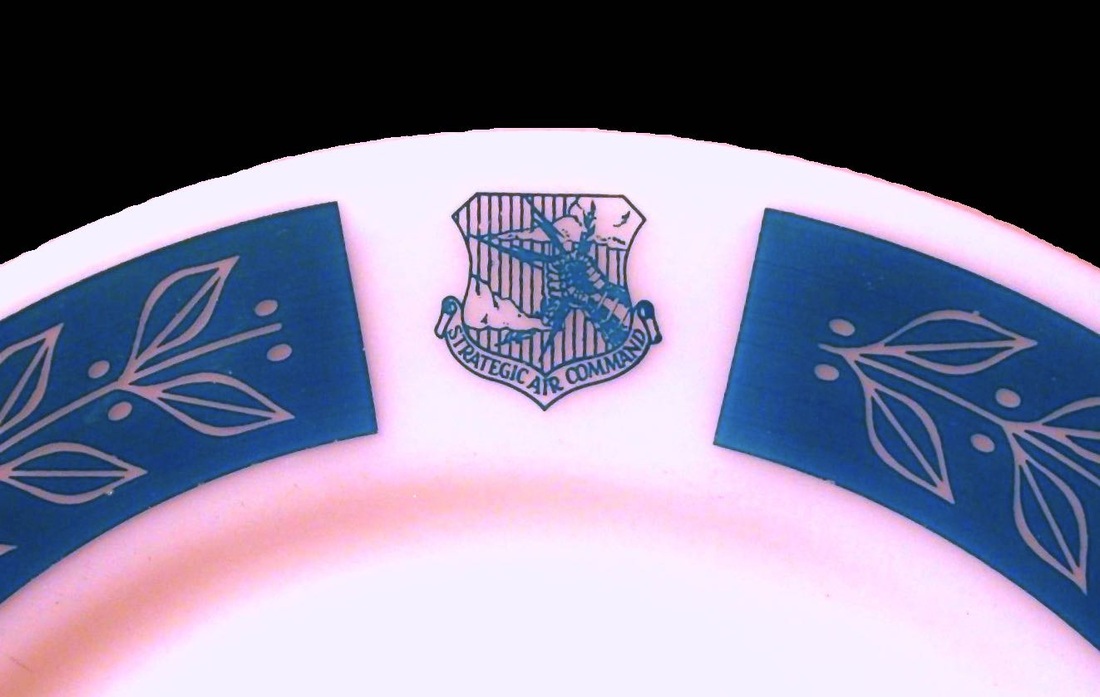




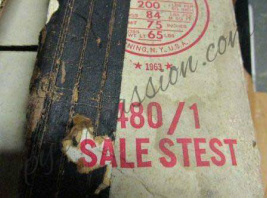
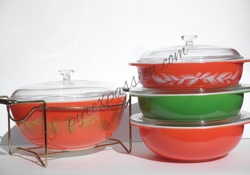
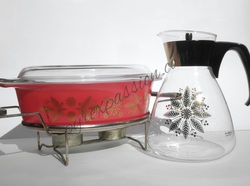
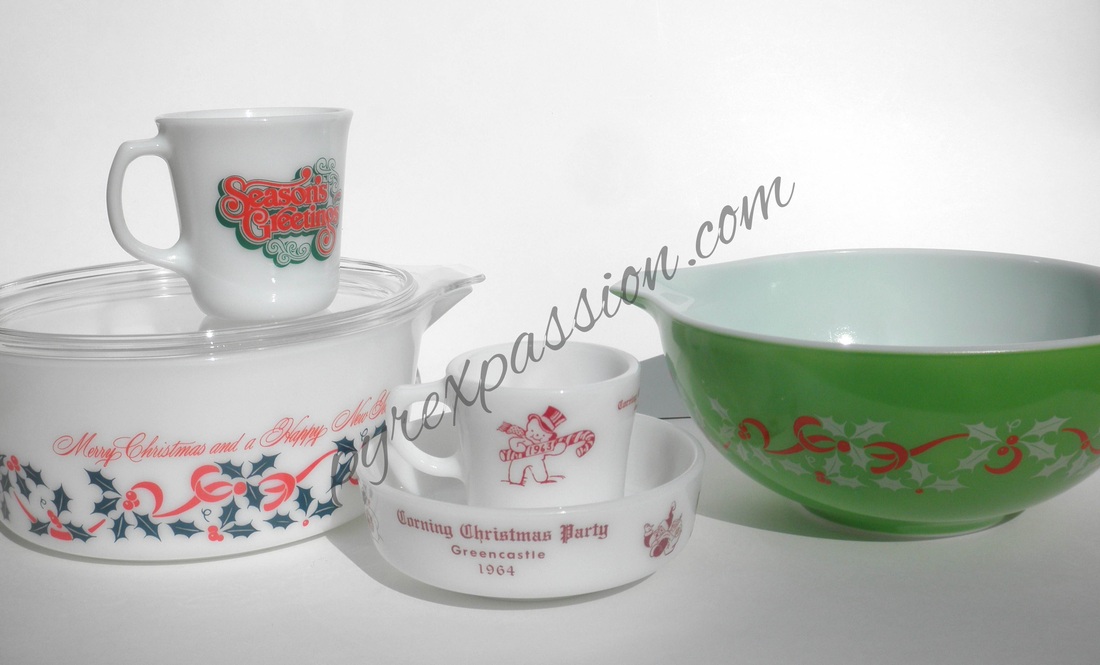
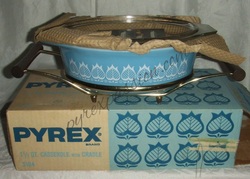
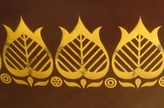
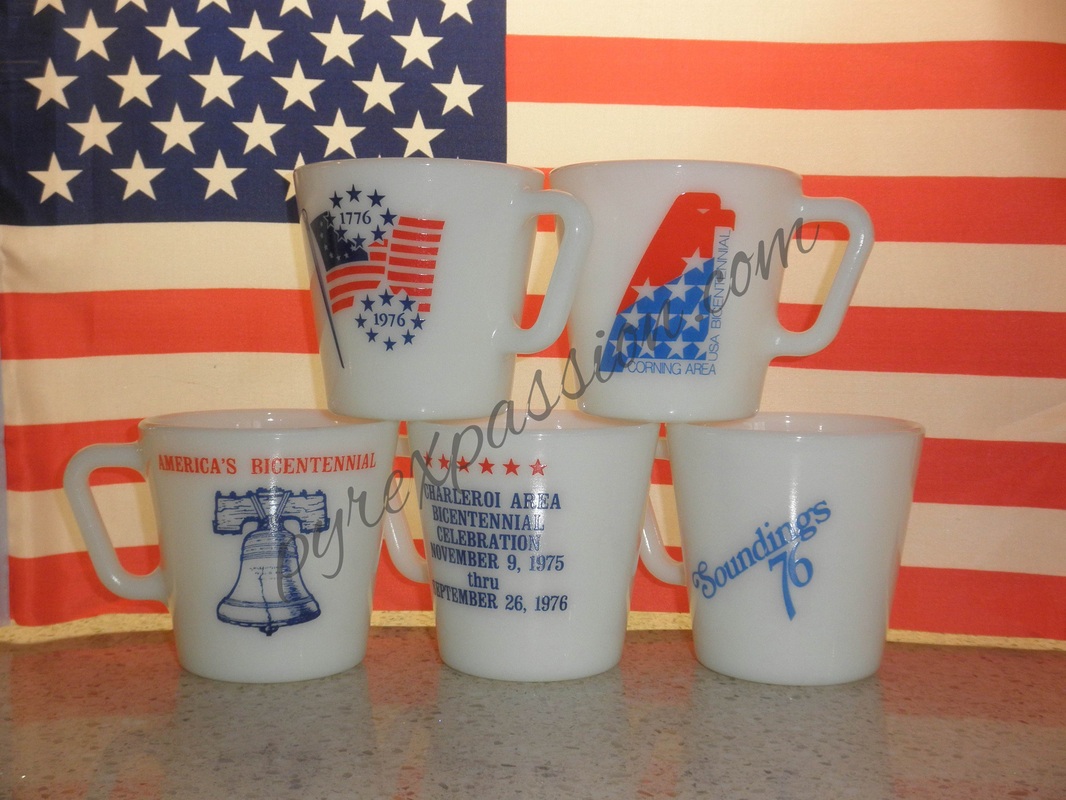
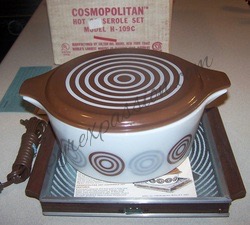
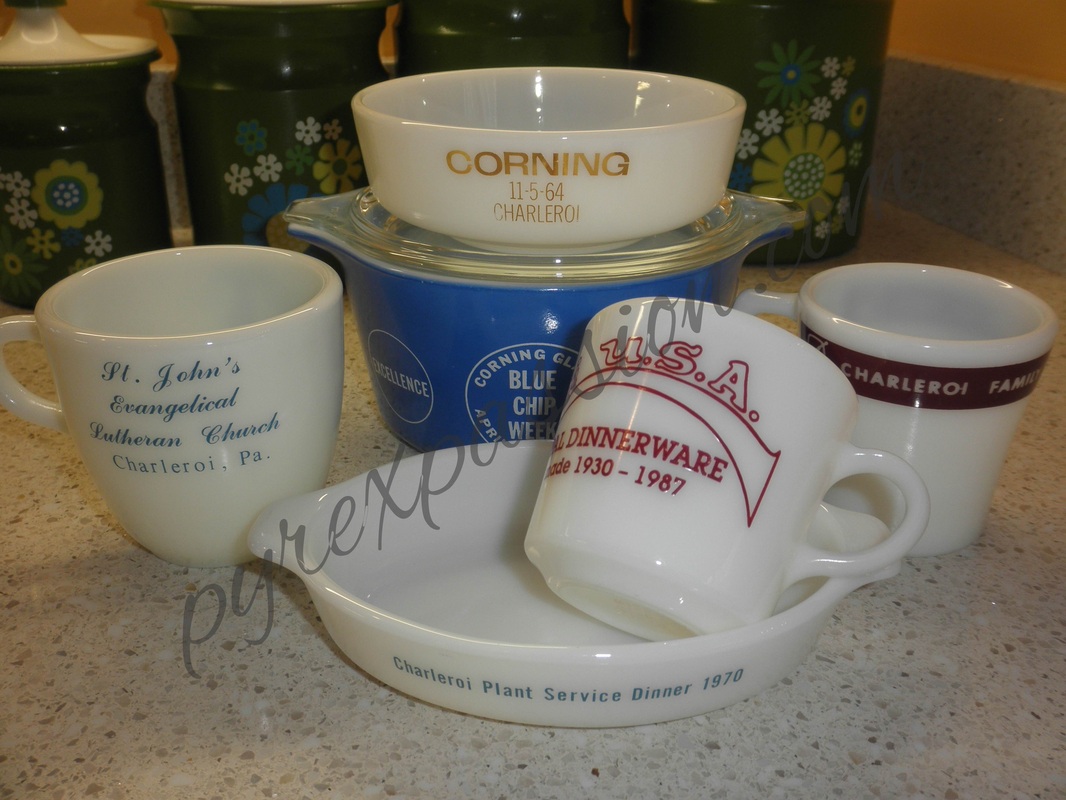
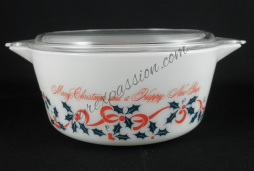
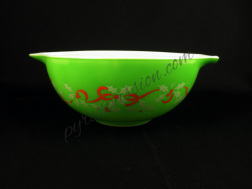
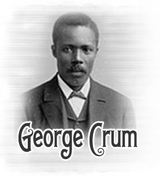

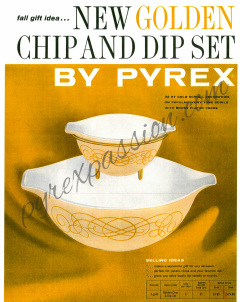
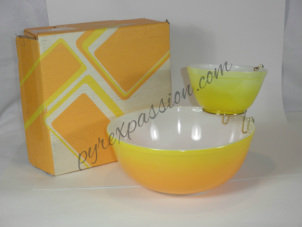
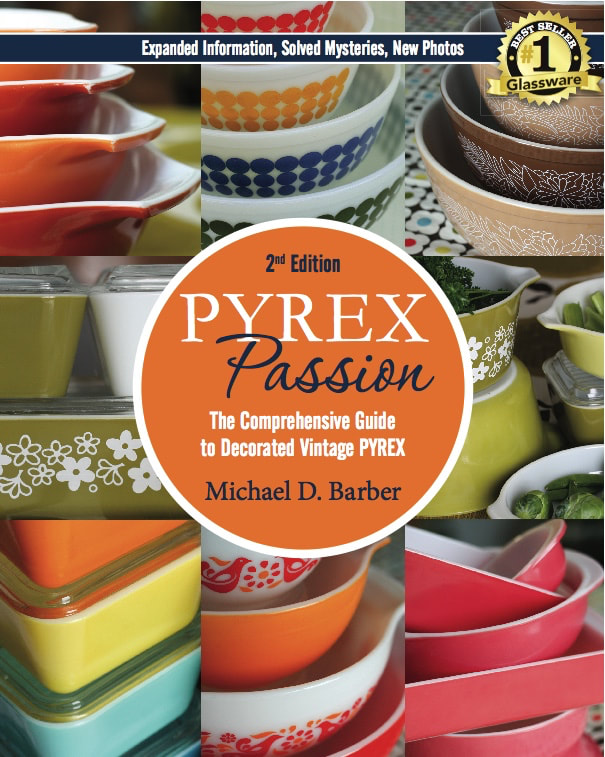
 RSS Feed
RSS Feed